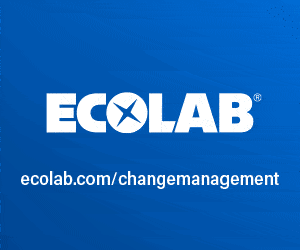Quality managers need to adapt quality systems to address the complexities that come with the globalisation and externalisation of good practice (GxP)-critical operations. Along the entire supply chain, transparency and data integrity are critical to establish processes that ultimately ensure that product quality is not compromised.
Modern and business-centric applications, built on cloud technology, provide quality professionals with real-time visibility into data that is accurate and can be securely shared with other stakeholders, whether internal or external. This significantly reduces the effort required to obtain and review information that is critical for quality decisions, and it also prevents quality from being the bottleneck in the overarching product supply flow.
Before we explore how cloud-based systems can help the business culture shift required and the end-user viewpoint, let’s look at how we got here.
The externalisation of GxP-critical operations has been a continuous trend during the last few years. For example, manufacturing outsourcing has grown steadily, with cost reduction being a key driver. In fact, demand for outsourced services in manufacturing rose from $800m in 1998 to $2.5bn in 2014, and is forecast to reach $4.1bn by 2019, according to analyst group High Tech Business Decisions’ December 2014 industry study.1
Externalisation inevitably leads to more process interfaces and fragmentation, according to further research.2 In their December 2014 study, 'The top ten global health supply chain issues: Perspectives from the field,' authors Natalie Privett and David Gonsalvez identified a number of supply chain issues that result from this new complexity. This includes key issues such as a lack of co-ordination, management of inventory and orders, and visibility over shipments.
Beside the fact that common goals of a lean supply chain could be compromised, it becomes obvious that complex and fragmented processes lead to increased quality and compliance risks. Mitigation of those risks has cost implications, so the initial reduction of direct manufacturing costs through outsourcing may be eliminated by raising quality’s contribution to the cost of goods sold (COGS).
But it’s not all about cost. When supply chain transparency is limited and quality is compromised, there could be a direct risk to public health and serious consequences for manufacturers.
Many supply chain issues are directly or indirectly related to the availability and accuracy of critical information in quality control. Subsequently, leading regulators have acknowledged that the integrity of underlying data has become a major root cause of quality failure and compliance violations.
The US Food and Drug Administration (FDA) states in its most recent publication: 'In recent years, FDA has increasingly observed cGMP [current Good Manufacturing Practice] violations involving data integrity during CGMP inspections. This is troubling because ensuring data integrity is an important component of industry’s responsibility to ensure the safety, efficacy and quality of drugs, and of FDA’s ability to protect the public health.'3
In the UK, the Medicines and Healthcare Products Regulatory Agency (MHRA) is taking a leading role in the data integrity discussion and has provided detailed guidance: 'With support from the correct organisational culture, the next important element of successful data governance is to understand the data lifecycle. This will enable the implementation of a system, which is designed to assure the integrity of data throughout its life, beyond the limitations of data review. The data lifecycle considers all phases in the life of the data, from initial generation and recording, through processing, use, archiving, retrieval and (where appropriate) destruction. Failure to address just one element of the data lifecycle will weaken the effectiveness of the measures implemented elsewhere in the system.'4
The answer lies in the cloud
The new reality is that accountability for quality and compliance goes beyond company walls and so does the ownership of data and its end-to-end lifecycles. However, traditional IT applications in quality have been considered internal 'back-office' systems, silos that were not designed to easily share information across a more virtual supply chain network.
Cloud-based technology provides all stakeholders with access to accurate data in a single, authoritative system. It also empowers partners to be a part of the process. Now they can offer input, contribute data and improve the entire operation. Improved access, visibility and secure control requires an enterprise-wide, end-to-end system that’s easily accessible to third parties and that reliably captures data at the point it is generated.
With a cloud-based approach, life sciences companies can actively control data that goes outside with appropriate restrictions on external access. All review and approval actions are tracked within the system with consistent audit trails, time stamps and reports. This comprehensive view of data reduces the risk of mistakes, harmonising the entire ecosystem.
We can see how cloud computing addresses Privett and Gonsalvez’s key supply chain issues – lack of co-ordination, management of inventory and orders and shipment visibility. The cloud can provide a single source of truth where documents and correspondence can be stored and easily retrieved, which also helps to simplify GxP compliance significantly.
Another benefit of migrating to the cloud is that the access to increased visibility in the supply chain will also enable data analysts to spot trends that could lead to even further efficiencies.
Cloud adoption is a strategic business decision
Once a quality manager decides to investigate a cloud-based quality system, what considerations should they keep in mind?
The first thing to remember is that moving to cloud-based solutions is a business decision, not only an IT decision. Cloud-based applications provide a new way of making everyone’s jobs along the chain easier and more transparent. The decision to move to a cloud-based solution requires deep, fact-based risk assessment throughout the chain and buy-in from key decision-makers. User adoption is also a key consideration as the staff must be happy to use the system, and users will require training to make the most of the benefits of using the cloud.
Security is also a concern. This is where the regulated cloud matters because it means the vendor has designed, built and validated the entire hardware and software stack for the sole purpose of providing applications to the GxP-regulated industry. There are many definitions of cloud computing around, and only a few of them are suitable for life sciences.
When supply chain transparency is limited and quality is compromised, there could be a direct risk to public health
When the decision for a cloud solution is made, it can be quickly deployed. Benefits can be seen in a very short period of time, as secure and seamless collaboration is enabled once internal users and external partners are live on the system.
In a blog post, pharmaceutical IT executive Michael Hughes explained the benefits he saw migrating to a cloud IT organisation when he was head of IT at Kythera Pharmaceuticals: 'After years of steadily proliferating on-premise systems – and the array of hardware and software that comes with them – we’re finally seeing technology move in the opposite direction. In today’s IT department, the next big thing isn’t the pursuit of more – it’s consolidation, harmonisation and shifting to the cloud. The difference in efficiency is having a significant impact on agility and the bottom line. Standardising on using the cloud has eliminated the time, expense, and hassle of maintaining hardware and software in-house.'5
Many quality managers may have some initial reservations about cloud-based technology. But more organisations see the value and are rethinking their system landscapes. When modernising quality management systems, cloud technology can be a key element in fixing underlying issues in terms of quality oversight, external collaboration and data integrity.
References
1. 'Biopharmaceutical Outsourcing Continues to Grow,' by Agnes Shanley, Pharmaceutical Technology (April 2016): www.pharmtech.com/dcat-2016-biopharmaceutical-outsourcing-continues-grow.
2. 'The Top Ten Global Health Supply Chain Issues: Perspectives from the Field,' by Natalie Privett and David Gonsalvez: www.sciencedirect.com/science/article/pii/S2211692314200002.
3. 'Data Integrity and Compliance with CGMP, Guidance for the Industry Draft (April 2016): www.fda.gov/downloads/drugs/guidancecomplianceregulatoryinformation/guidances/ucm495891.pdf.
4. 'Good Manufacturing Practice (GMP) Data Integrity: A New Look at an Old Topic, Part 1,' MHRA blog: https://mhrainspectorate.blog.gov.uk/2015/06/25/good-manufacturing-practice-gmp-data-integrity-a-new-look-at-an-old-topic-part-1/.
5. 'Life When You’re 100% Cloud,' Michael Hughes of Kythera Biopharmaceuticals for Veeva Systems’ blog: https://www.veeva.com/life-when-youre-100-cloud/.




